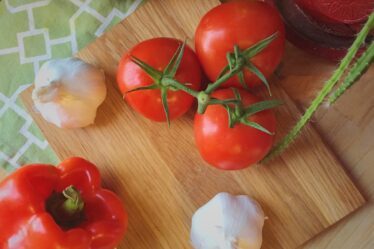
Spices are essential ingredients in cooking that add flavor, aroma, and color to dishes. They have been used for centuries to enhance the taste of food and create unique culinary experiences. Spice blends, also known as spice mixes or masalas, are combinations of spices that create unique and complex flavors. These blends are used in various cuisines worldwide and are an integral part of many traditional recipes.
The use of spice blends is prevalent in different cultures and cuisines. Each cuisine has its own signature spice blends that are used to create the distinct flavors associated with that cuisine. For example, Indian cuisine is known for its use of spice blends like garam masala, while Moroccan cuisine uses ras el hanout. These spice blends not only add flavor to the dishes but also provide depth and complexity to the overall taste profile.
Key Takeaways
- Spice blends are important in cooking as they add depth and complexity to dishes.
- Understanding flavor profiles is essential in creating spice blends.
- Essential tools for making spice blends include mortar and pestle and spice grinder.
- Commonly used spices in spice blends include cumin, coriander, and turmeric.
- Spice blends from around the world include garam masala, ras el hanout, and curry powder.
The Basics of Creating Spice Blends: Understanding Flavor Profiles
Creating spice blends requires an understanding of flavor profiles. Flavor profiles refer to the taste, aroma, and texture of spices. It is important to balance these elements to create a harmonious blend. Some spices have a strong and pungent flavor, while others are more subtle and delicate. By combining spices with complementary flavors, you can create a well-rounded blend that enhances the taste of your dishes.
Spices can be categorized into different flavor profiles, such as sweet, savory, spicy, and bitter. Sweet spices like cinnamon and nutmeg add warmth and depth to dishes, while savory spices like cumin and coriander provide a rich and earthy flavor. Spicy spices like chili powder and paprika add heat and intensity to dishes, while bitter spices like turmeric and fenugreek add complexity and balance.
Understanding the flavor profiles of different spices allows you to create spice blends that complement each other and enhance the overall taste of your dishes.
Essential Tools for Making Spice Blends: Mortar and Pestle, Spice Grinder, and More
To create spice blends, you will need a few essential tools. The most common tools used in making spice blends are a mortar and pestle and a spice grinder. A mortar and pestle is a traditional tool used to grind spices by hand. It allows you to control the texture and consistency of the spices, resulting in a more flavorful blend. A spice grinder, on the other hand, is an electric or manual device that quickly grinds spices into a fine powder.
Other essential tools for making spice blends include measuring spoons, mixing bowls, and airtight containers for storage. Measuring spoons are used to accurately measure the amount of each spice in the blend. Mixing bowls are used to combine the spices and ensure they are evenly distributed. Airtight containers are used to store the spice blends and keep them fresh for longer periods.
Having these tools on hand will make the process of creating spice blends easier and more efficient.
The Most Commonly Used Spices in Spice Blends: Cumin, Coriander, Turmeric, and More
| Spice | Origin | Flavor Profile | Health Benefits |
|---|---|---|---|
| Cumin | Mediterranean, Middle East, India | Earthy, nutty, warm, slightly bitter | May aid digestion, improve blood sugar control, and have anti-inflammatory properties |
| Coriander | Mediterranean, Middle East, Asia | Citrusy, slightly sweet, warm, nutty | May improve digestion, lower blood sugar levels, and have anti-inflammatory properties |
| Turmeric | India, Southeast Asia | Earthy, slightly bitter, warm, peppery | May have anti-inflammatory and antioxidant properties, and potentially reduce the risk of chronic diseases |
| Paprika | Spain, Hungary, South America | Sweet, smoky, slightly spicy | May have anti-inflammatory and antioxidant properties, and potentially improve heart health |
| Cinnamon | Sri Lanka, India, Indonesia | Sweet, warm, slightly spicy | May improve blood sugar control, have anti-inflammatory and antioxidant properties, and potentially reduce the risk of heart disease |
There are countless spices that can be used in spice blends, but some are more commonly used than others. Cumin, coriander, and turmeric are some of the most commonly used spices in spice blends. Cumin has a warm and earthy flavor that adds depth to dishes. Coriander has a citrusy and slightly sweet flavor that complements a wide range of ingredients. Turmeric has a vibrant yellow color and a slightly bitter taste that adds complexity to dishes.
Other popular spices used in spice blends include cinnamon, cardamom, cloves, and nutmeg. Cinnamon has a sweet and warm flavor that pairs well with both sweet and savory dishes. Cardamom has a strong and aromatic flavor that is often used in desserts and beverages. Cloves have a strong and pungent flavor that adds depth to dishes. Nutmeg has a warm and slightly sweet flavor that is often used in baking.
These spices can be combined in different proportions to create unique and flavorful spice blends.
Spice Blends from Around the World: Garam Masala, Ras el Hanout, and Curry Powder
Spice blends vary from culture to culture and are an integral part of many traditional recipes. Here are a few examples of spice blends from around the world:
– Garam masala is a spice blend commonly used in Indian cuisine. It typically includes spices like cumin, coriander, cardamom, cinnamon, cloves, and black pepper. Garam masala adds warmth and depth to dishes like curries and biryanis.
– Ras el hanout is a North African spice blend used in Moroccan dishes. It typically includes spices like cumin, coriander, cinnamon, ginger, turmeric, and cloves. Ras el hanout adds complexity and richness to dishes like tagines and couscous.
– Curry powder is a blend of spices used in Indian and Southeast Asian cuisines. It typically includes spices like turmeric, cumin, coriander, fenugreek, and chili powder. Curry powder adds heat and flavor to dishes like curries and stir-fries.
These spice blends are just a few examples of the diverse range of flavors that can be created by combining different spices.
Making Your Own Spice Blends: Tips and Tricks for Perfecting Your Blend

Making your own spice blends allows you to customize the flavors according to your taste preferences. Here are some tips and tricks for perfecting your blend:
– Experiment with different spice combinations to create unique blends. Start with small batches and adjust the seasoning to your taste. Keep track of the proportions used so that you can recreate the blend in the future.
– Toasting spices before grinding them can enhance their flavor. Heat a dry skillet over medium heat and add the whole spices. Toast them for a few minutes until fragrant, then remove from heat and let them cool before grinding.
– Use fresh and high-quality spices for the best flavor. Whole spices retain their flavor longer than ground spices, so consider buying whole spices and grinding them as needed.
– Store your spice blends in airtight containers away from heat and light. This will help preserve their flavor and aroma for longer periods.
By following these tips and tricks, you can create spice blends that are tailored to your taste and preferences.
Storing and Using Your Spice Blends: Keeping Them Fresh and Incorporating Them into Your Cooking
Proper storage is essential to keep your spice blends fresh and flavorful. Store them in airtight containers in a cool, dry place away from heat and light. This will help preserve their flavor and aroma for longer periods.
To incorporate your spice blends into your cooking, use them to season meats, vegetables, soups, and stews. Sprinkle them on popcorn, roasted nuts, and other snacks for added flavor. You can also use them as rubs or marinades for grilling or roasting meats. The possibilities are endless when it comes to using spice blends in your cooking.
Experiment with different combinations and quantities to find the perfect balance of flavors for your dishes. Don’t be afraid to get creative and try new things. Spice blends can elevate the flavor of any dish and take it to the next level.
Using Spice Blends in Baking: Adding Flavor to Desserts and Breads
Spice blends are not just limited to savory dishes; they can also be used to add flavor to desserts and breads. For example, pumpkin pie spice is a blend of spices like cinnamon, nutmeg, ginger, cloves, and allspice. It is commonly used to flavor pumpkin pies, but it can also be used in other desserts like cookies, cakes, and muffins.
Similarly, apple pie spice is a blend of spices like cinnamon, nutmeg, and allspice. It is used to flavor apple pies, but it can also be used in other apple-based desserts like crisps, cobblers, and tarts.
Cinnamon, nutmeg, and cardamom are popular spices used in baking. They add warmth and depth to baked goods and pair well with ingredients like chocolate, fruits, and nuts.
By incorporating spice blends into your baking, you can add a unique and flavorful twist to your favorite desserts and breads.
Health Benefits of Spices: Boosting Immunity, Reducing Inflammation, and More
In addition to their flavor-enhancing properties, spices also offer a range of health benefits. Many spices are rich in antioxidants and anti-inflammatory compounds that can boost immunity, reduce inflammation, and promote overall health.
Turmeric is one such spice that has gained popularity for its potent health benefits. It contains a compound called curcumin, which has powerful anti-inflammatory and antioxidant properties. Turmeric has been used for centuries in traditional medicine to treat various ailments and is believed to have a positive impact on conditions like arthritis, heart disease, and cancer.
Ginger is another spice that is known for its health benefits. It has anti-inflammatory properties and can help relieve nausea, reduce muscle pain, and lower blood sugar levels.
Cinnamon is also packed with antioxidants and has been shown to have anti-inflammatory effects. It may help lower blood sugar levels, improve heart health, and protect against neurodegenerative diseases.
By incorporating spices into your cooking and baking, you can not only enhance the flavor of your dishes but also reap the health benefits they offer.
The Endless Possibilities of Spice Blends in Cooking
Spice blends are versatile ingredients that can elevate the flavor of any dish. They add depth, complexity, and a unique twist to your culinary creations. By understanding flavor profiles, experimenting with different spice combinations, and using high-quality spices, you can create your own signature spice blends that reflect your taste and preferences.
Incorporate spice blends into your cooking and baking to explore the endless possibilities of flavor. From savory dishes to sweet treats, spice blends can take your culinary creations to new heights. So, don’t be afraid to get creative and experiment with different spices and flavors. The world of spice blends is waiting for you to explore and discover new tastes and experiences.
If you’re a fan of spices and love experimenting with different flavors in your cooking, then you’ll definitely want to check out this article on Flavorful Sips. They have a fantastic guide on how to make your own homemade spice powders, including everything from chili powder to curry powder. It’s a great resource for anyone looking to add a little extra kick to their dishes. So why not take your culinary skills to the next level and explore the world of spices with this informative article? Click here to read more!



